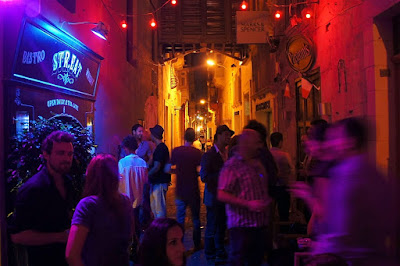Breaking free from its traditional reputation as a destination for sun, sea and sand package holidays, Malta has begun to reveal a fresh new face to the world. In preparation for its capital Valletta's reign as European Capital of Culture in 2018, many of the islands' most impressive historic sites have been restored, gastronomic restaurants and boutique hotels have sprung up, and exciting new nightlife and outdoor activities scenes have begun to develop.
Mysterious and dramatic historic sites
With over 6000 years of history packed into its diminutive 314 sq km, is an absolute paradise for history buffs. Now is a great time to visit, because a number of the most significant sites have undergone renovations in the past few years. Malta's neolithic inhabitants left behind a series of mysterious circular temples scattered across the islands and voluptuous female statuettes (now in the National Museum of Archaeology in Valletta), but the star attraction is the underground necropolis, which recently reopened with a new climate-control system and expanded visitor centre (book at least two months in advance, as only 80 visitors are permitted per day).
Destinations
The Maltese Islands have three sites inscribed on the UNESCO World Heritage List. These are the City of Valletta, the Megalithic Temples and the Ħal Saflieni Hypogeum.
In all, seven megalithic temples are found on the islands of Malta and Gozo, each the result of an individual development. The two temples of Ġgantija on the island of Gozo are notable for their gigantic Bronze Age structures. The Ġgantija Temples are the oldest, free-standing monuments in the world and are a testament to the Island's inhabitation for at least 1,000 years before the famous Egyptian pyramids of Giza were constructed.
On the island of Malta, the temples of Ħaġar Qim, Mnajdra and Tarxien are unique architectural masterpieces, given the limited resources available to their builders. The Ta' Ħagrat and Skorba complexes show how the tradition of temple-building was handed down in Malta. These temples were inscribed on the World Heritage List as a group and represent a unique architectural tradition that flourished on the Maltese Islands between 3600 and 2500 B.C.
The Ħal Saflieni Hypogeum is a rock-cut underground complex that was used both as a sanctuary as well as for burial purposes by the temple builders. It was discovered during construction works in 1902. The three underground levels date from around 3600 to 2400 B.C. The monument is considered one of the essential prehistoric monuments in the world.
The capital of Malta, Valletta, is inextricably linked to the history of the military and charitable Order of St John of Jerusalem. Built after the Great Siege of 1565 and named after Grandmaster Jean Parisot de la Valette, this fortified city has hundreds of monuments, all within a relatively small space, making it one of the most concentrated historic areas in the world.













No comments:
Post a Comment